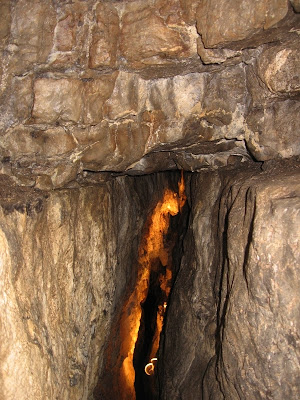Formerly known as Enallagma cyathigerum and its range believed to to be circumpolar, recent research indicates that the North American and Eurasian lines of this bluet diverged 250,000 years ago and the North American stock now goes by the epithet Enallagma annexum.
Northern and Boreal Bluets cannot be reliably distinguished in the field by sight and it's necessary to examine the male's terminal appendages or the females mesostigmal plates. A tandem pair of Northern/Boreal Bluets – both species have large postocular spots and tapering humeral (shoulder) stripes.
Perhaps this quote from the Swiss naturalist Louis Agassiz summarizes the following pages and images best:
"I spent the summer traveling; I got halfway across my back yard."
Friday, May 30, 2014
Northern Bluet (Enallagma annexum)
Thursday, May 29, 2014
The Return of the Juniper Hairstreaks
Last year in late May a friend photographed a Juniper Hairstreak roughly 1.5 km west of Tweed. We searched a nearby dry field that hosted scattered stands of Eastern Red Cedar and discovered a small colony of these elusive little butterflies.
It seems that Callophrys gryneus gryneus is still with us. This hairstreak is seldom encountered since south-central Hastings County is near the northern periphery of its range, and due to its relatively short flight season.
Wednesday, May 28, 2014
Ontario's Largest Natural Cavern
A little to the west of the intersection of Harmony Road and Shannonville Road in southern Hastings county lies the home of Ontario's largest natural cavern.
The story of Tyendinaga Cavern and Caves dates back to the Paleozoic Era during the Ordovician Period, when what is today's karst topography once formed the beds of ancient seas some 490 million to 440 million years ago. Fossil remains of the sea life can be found in the rocks surrounding the caves, and visitors are treated to mural painted by Elizabeth Koch and Ildiko Olive depicting their interpretation of the living animals. It's a shame there were background reflections and glare because the photograph really doesn't do the painting justice.
Looking at her from a distance I mistakenly thought Charlotte might be a Charlie, because it seemed that she had the enlarged palps characteristic of male spiders (some photos of a male Meta ovalis). But zooming in on the photos on the computer established that the palps were actually her lunch and the spider is indeed a female. But now I wonder exactly what small denizen of the caves she is eating?
Thursday, May 15, 2014
Salticid Snapshots
Saltation – from Latin, saltus, meaning "leap", and since jumping spiders lack extensor muscles at their leg joints they accomplish their amazing leaps by suddenly increasing the blood pressure to their fourth pair of legs. The precision of their predatory pounces is guided by their large AME – Anterior Median Eyes – the acuity of which are ten times better than the huge compound eyes of a dragonfly.
This pretty little female spider goes by the name of Marpissa formosa. She was found on the doorframe of a car and had probably been hitchhiking there for the past hour, hanging on for dear life. The reflective paint made a poor background, as did some red granite, but she obligingly jumped up and posed on my hand.











































































